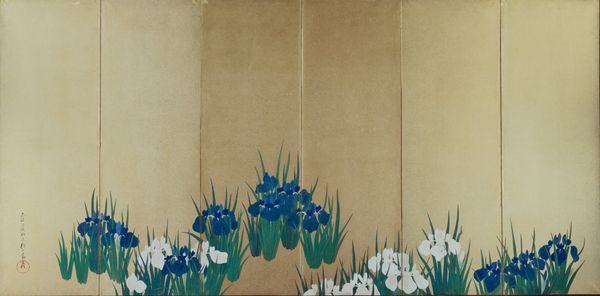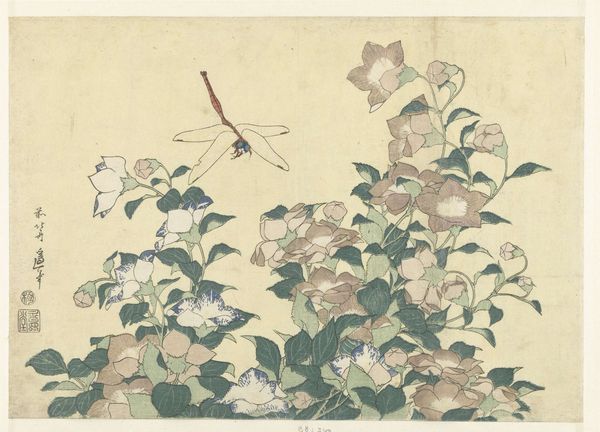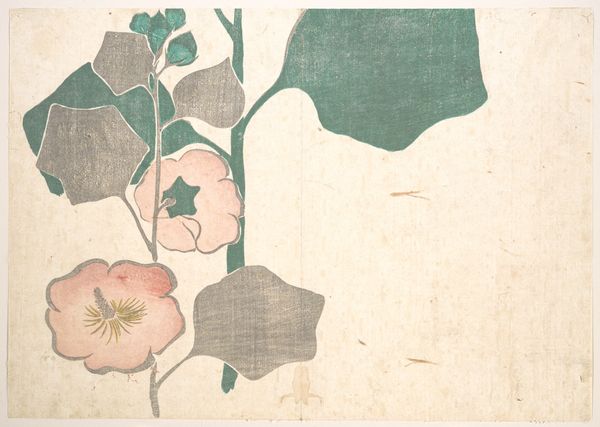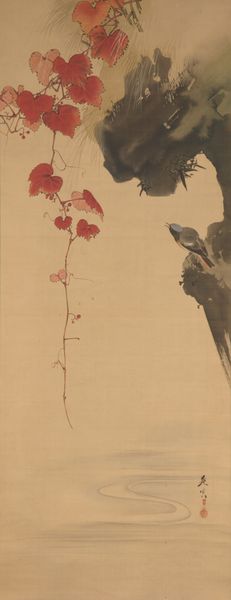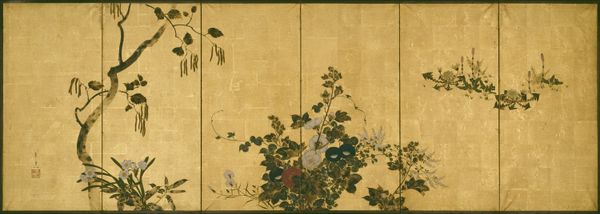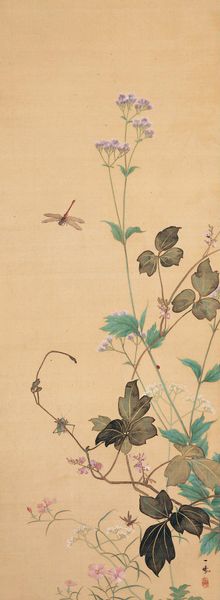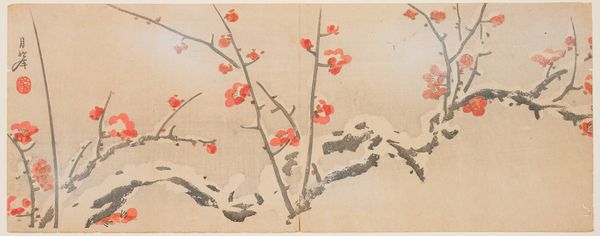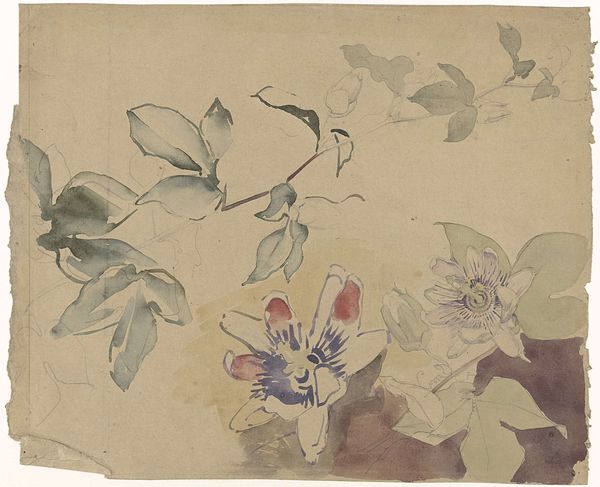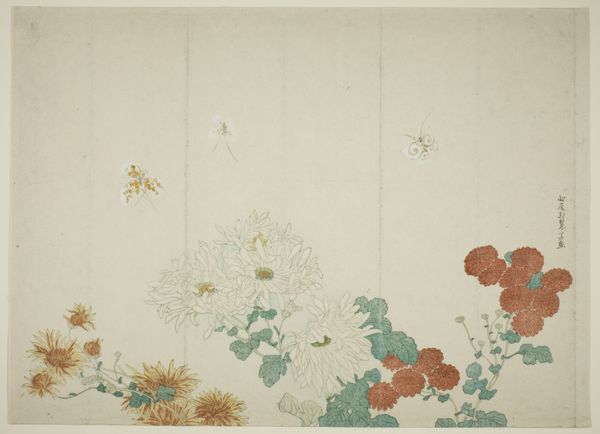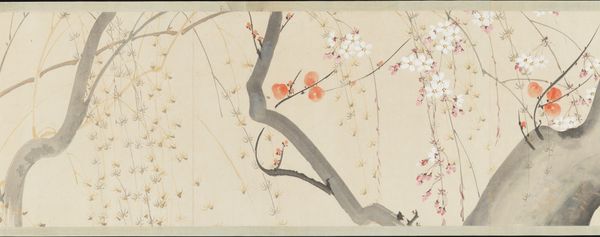
painting, watercolor, hanging-scroll, ink
#
organic
#
water colours
#
painting
#
asian-art
#
landscape
#
figuration
#
watercolor
#
hanging-scroll
#
ink
#
line
Dimensions: 24 5/16 × 40 9/16 in. (61.75 × 103.03 cm) (image)47 9/16 × 46 7/8 in. (120.81 × 119.06 cm) (mount, without roller)
Copyright: Public Domain
Editor: So, this hanging scroll is called "Morning Glory," likely from the early 19th century, painted by Watanabe Nangaku using ink and watercolors. It feels airy and delicate. What strikes you when you look at it? Curator: It's interesting how Nangaku positions this very traditionally feminine subject within a broader cultural context. In Edo-period Japan, the morning glory, or asagao, wasn't just a pretty flower. Its fleeting beauty was often linked to notions of impermanence and the transient nature of life, ideas deeply rooted in Buddhist philosophy. How do you see that ephemeral quality reflected here? Editor: Well, the vines seem to be reaching, but not really grasping anything solid. The butterflies, too, seem very light and temporary. Curator: Precisely. And think about the class dynamics at play. While cultivated in elite gardens, morning glories also resonated with the merchant classes who, despite their economic power, were often socially marginalized. They cultivated them as a means of expression, perhaps subtly challenging the rigid social hierarchy. Notice how the flowers burst beyond the confines you might expect – is it controlled or untamed? Editor: Now that you mention it, the asymmetry makes the painting feel a little rebellious. The blooms and vines seem to almost spill out of the frame. Curator: Absolutely! And consider the implied viewer. Is this intended for quiet contemplation, or is it making a statement? It's about appreciating the fleeting moments and finding beauty in the everyday, maybe a quiet resistance against societal expectations. What might those expectations have been, do you think? Editor: Maybe to stay within your defined social role, to not "spill out" like the morning glories do? It’s a deceptively simple image with so much to unpack. Curator: Precisely, and by embracing this fragile beauty, Nangaku might be signaling a quiet act of defiance, highlighting the inherent worth and beauty in things that are often overlooked or considered transient. Editor: I’ll never look at a morning glory the same way again.
Comments
minneapolisinstituteofart about 2 years ago
⋮
In Japan, morning glories are called asagao, or “face of the morning,” in reference to the fleeting beauty of a woman’s face in the morning. The plant was originally brought to Japan from China as medicine, but the beauty of their blooms soon captivated aristocrats, who wrote poems about the flower. In the 1800s, morning glories became popular among casual and professional gardeners who actively bred them for natural mutations. Watanabe Nangaku studied painting under Maruyama Ōkyo, who was interested in the study of and depiction of nature. Here, he shows the morning glory from shifting angles and the subtle differences in color of the vines.
Join the conversation
Join millions of artists and users on Artera today and experience the ultimate creative platform.

